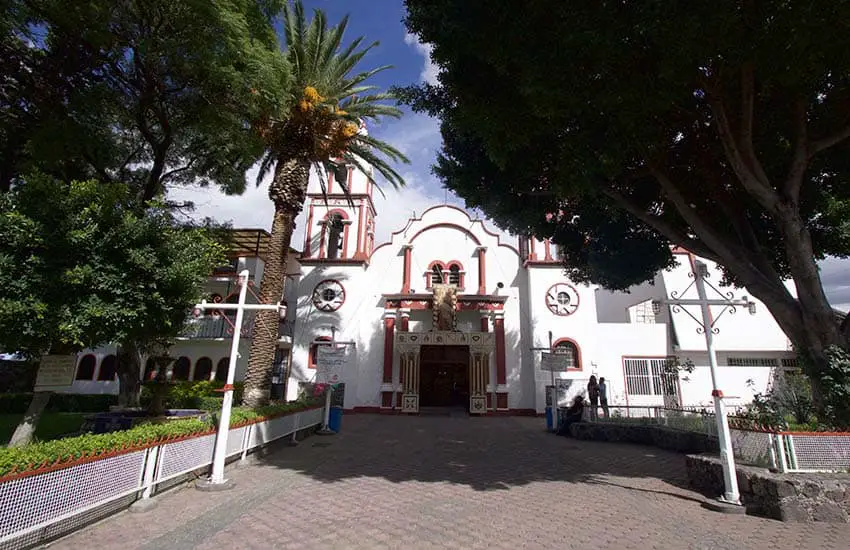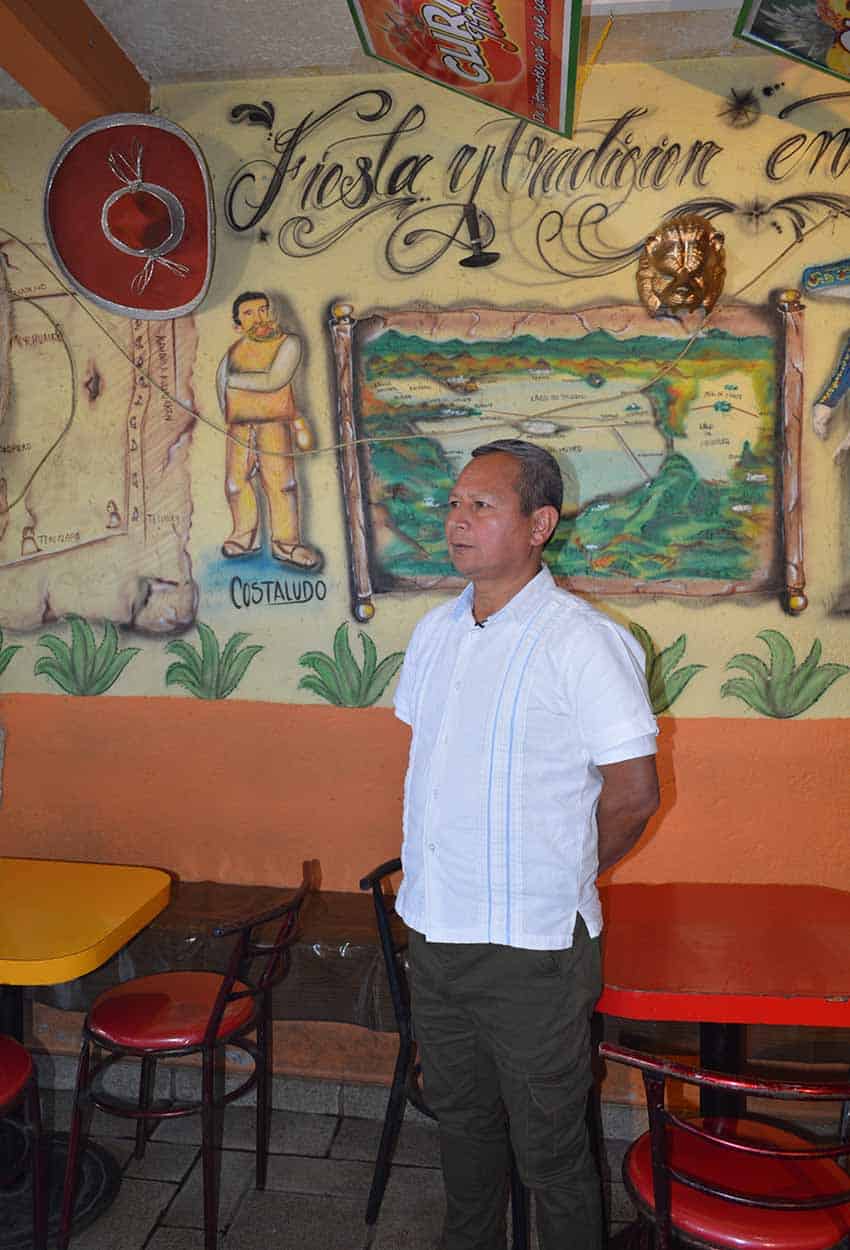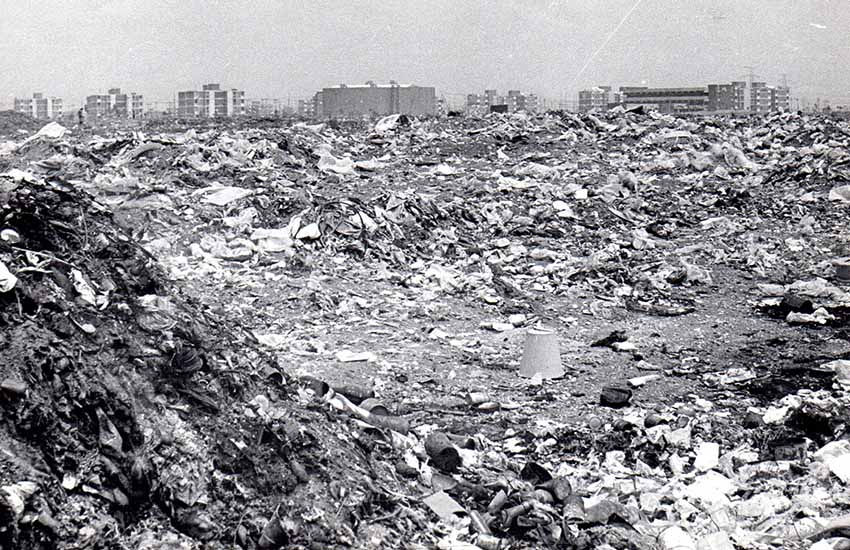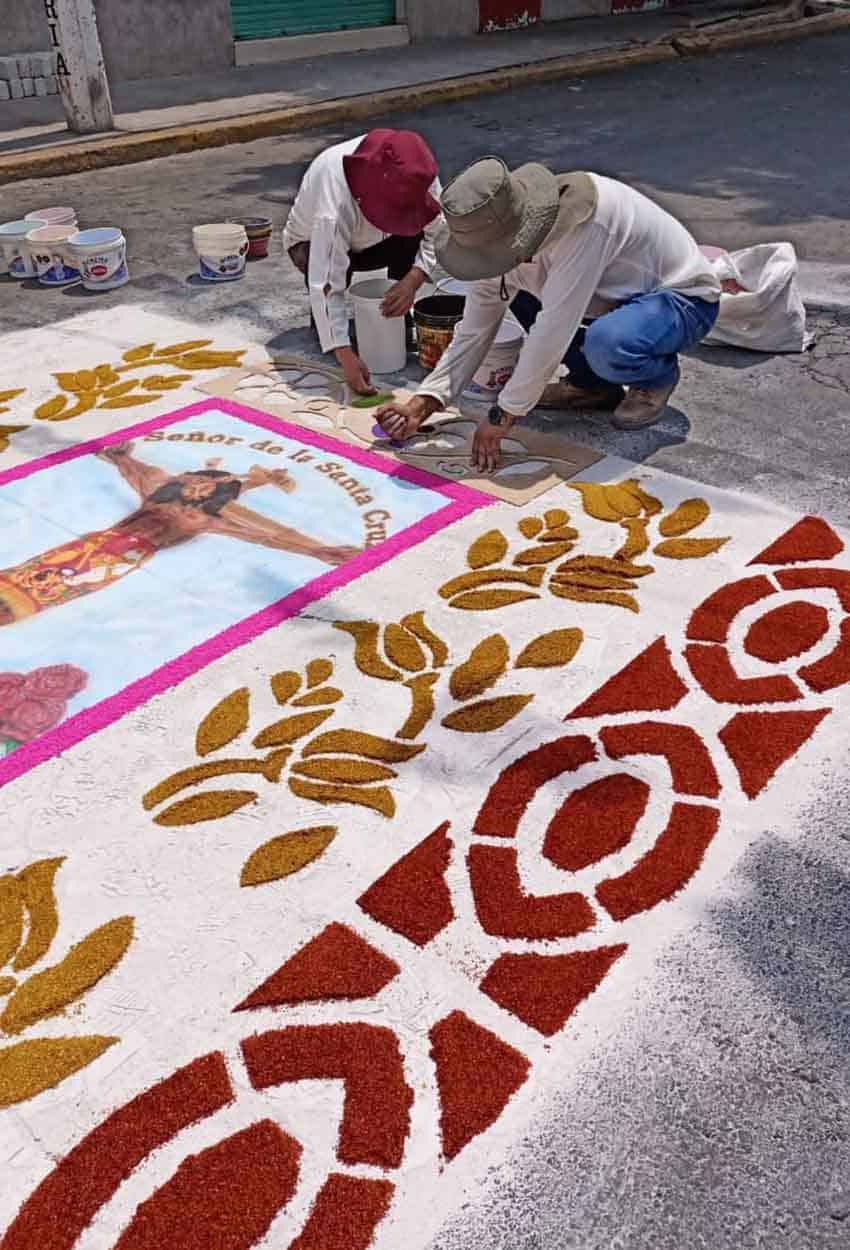There are really two Meyehualcos — the modern section of Mexico City’s Iztapalapa borough and the old original pueblo that struggles to survive.
The name Meyehualco comes from the Indigenous Nahuatl language, meaning “place of the maguey plants.” It reflects the community’s rural, agricultural heritage but also a long history of domination.

Until the 20th century, the name referred only to a village/town founded by migrating Chichimecas in 1496.
They are not easy to find, but the village’s layout and main structures still exist. An arch just off Calzada Ermita Iztapalapa indicates the old town entrance, and just south of that is a typical plaza and a parish church.
Known as Pueblo Santa Cruz Meyehualco (or sometimes as Barrio Santa Cruz Meyehualco), it is one of 15 original settlements in what is now the Iztapalapa borough, and its story demonstrates these original settlements’ struggles against urban sprawl.
Outside the old village, the streets immediately assume a grid pattern, a result of encapsulation by the growth of Mexico City in the 20th century. The families go back many generations, and the old stories and rivalries still matter. This includes the old division of Pueblo Meyehualco into the Huexotitlan and Texcalco neighborhoods.

This used to be a division between the (relatively) rich and poor; in the past, those from one could not marry those from the other, but today the rivalry is friendly. All did, and still do, come together to celebrate Meyehualco’s patron saint, Our Lord of the Cross, on May 3 with food, fireworks and processions.
Throughout Meyehualco’s history, its agriculture, labor and volcanic stone were exploited for the ruling classes of Mexico City. But it remained physically independent until less than 100 years ago.
One ugly reality of growing metropolises is that they need a “hidden” place to dump their garbage, and in the 1940s, Meyehualco became one such place. From then until the 1980s, over 44,712,500 tons of trash were dumped in an area north of the village proper, says Iztapalapa historian Beatriz Ramírez, an ecological disaster for both agriculture and what was left of Lake Texcoco there.
The dump was iconic enough to be the setting of one movie from Mexico’s Golden Age of Film, “El Hombre de Papel” (The Paper Man), the story of one man who made his living from picking recyclables, as many families did for more than 40 years.

As the city continued to grow, parts of the dump were redeveloped starting as early as the 1950s.
The “other” Meyehualco centers on the Unidad Habitacional Santa Cruz Meyehualco housing complex or Colonia Santa Cruz Meyehualco. It began with 3,000 housing units built between 1958 and 1963 and then filled with residents from other parts of Mexico City. This project also included a municipal market that still exists today, with a mural dedicated to “El Hombre del Papel.”
Nearby are the Old Tianguis and the New Tianguis, two street markets whose histories grew out of the economic crises of the 1980s and a somewhat-successful attempt to move the Old Tianguis after the 2017 earthquake.
Much of the rest of the dump was converted into Cuitláhuac Park. It was established in the 1990s with the ambitious goal of creating a new major urban green space in the poor eastern side of the city. The park is indeed impressive — 145 hectares with various sports facilities, regenerated wetlands and, interestingly, a drug rehab center.

It is a work-in-progress including IztapaSauria, a huge dinosaur exhibition, Utopia Meyehualco sporting and entertainment complex in 2021. But this development draws community focus away from the old Pueblo, which can be easily overlooked by visitors to the area.
People like Meyehualco cronista (historian) José Antonio Rivera Martínez work to save the town’s history, identity, and relevance in the face of ever-growing cultural imposition from the rest of the city they are officially part of.
People like him, from the old families, say that those in the colonia, (the modern neighborhoods) do not know the local culture or traditions and are outsiders. Rivera points to the stories and histories of the buildings and people to make the case that the city needs to do more to help protect it.
The best-known of its traditions is its Carnival. Most of Iztapalapa’s old towns have a carnival, with staggered dates ranging from just before Lent and on through to Easter. Pueblo Meyehualco’s turn is the week after Ash Wednesday, and is a curious mix of tradition and modernity.
![]()
Its origins are murky but are from no later than the 19th century. It’s been put on each year without fail with only two exceptions: one for the Mexican Revolution and the other for Covid.
In the past, the celebration of Carnival brought out the old rich/poor division. Those in Texcalco dressed in highly-decorated costumes, and those from the humbler Huexotitlan made do with burlap sacks to make costumes today called costales. The costales costume has been abandoned in favor of the charro for both neighborhoods at carnival, but it still appears in local murals and other artwork.
Rivera states that events like Carnival and its patron saint day are important to “recover the streets” from the surrounding urban encroachment. But despite the fact that Carnival is a cultural and economic success, that “recovery” is not complete. Other costumes, such as those depicting elements of modern popular culture and even politically-themed disguises, are not uncommon.
It proves Rivera’s point that preserving the old ways and identities is difficult because “… Social development and neoliberalism are imposing new cultural norms, which the young people absorb, and they don’t want to participate so much in the pueblo’s traditions.”
Leigh Thelmadatter arrived in Mexico over 20 years ago and fell in love with the land and the culture in particular its handcrafts and art. She is the author of Mexican Cartonería: Paper, Paste and Fiesta (Schiffer 2019). Her culture column appears regularly on Mexico News Daily.
